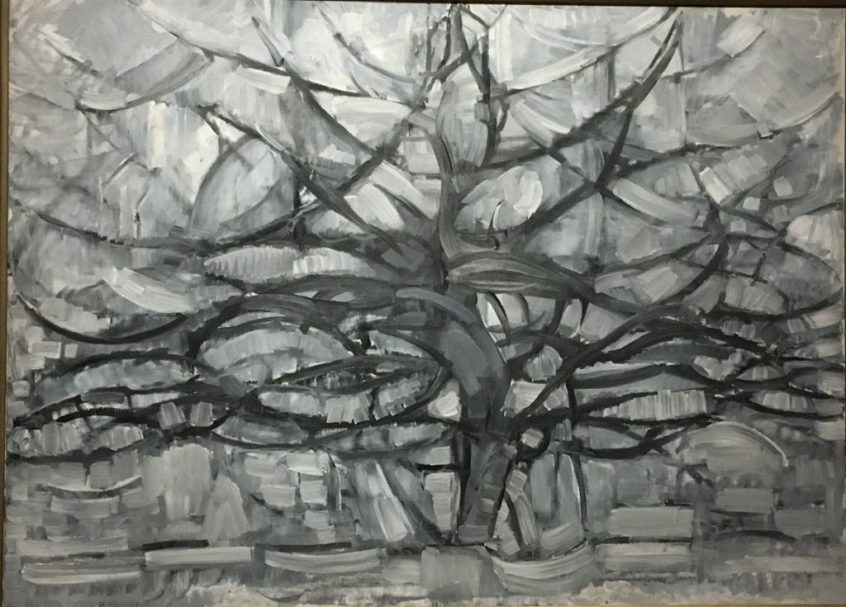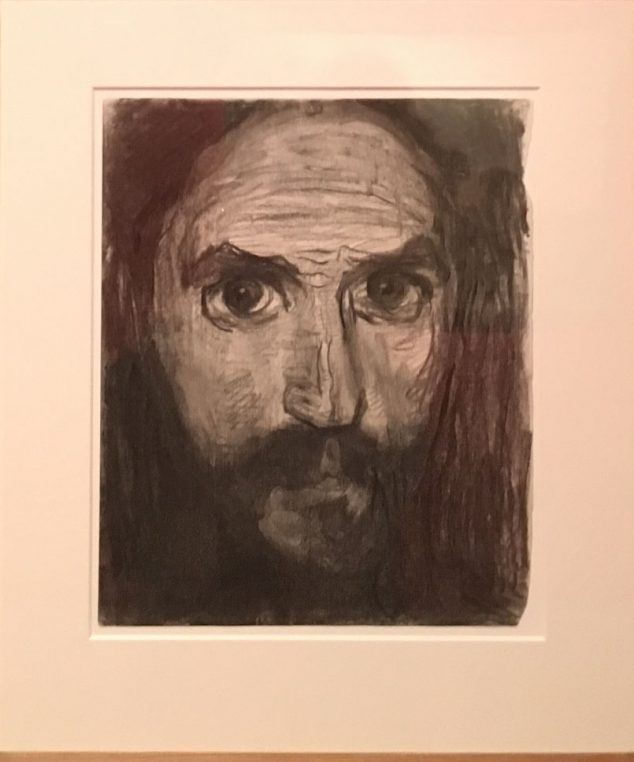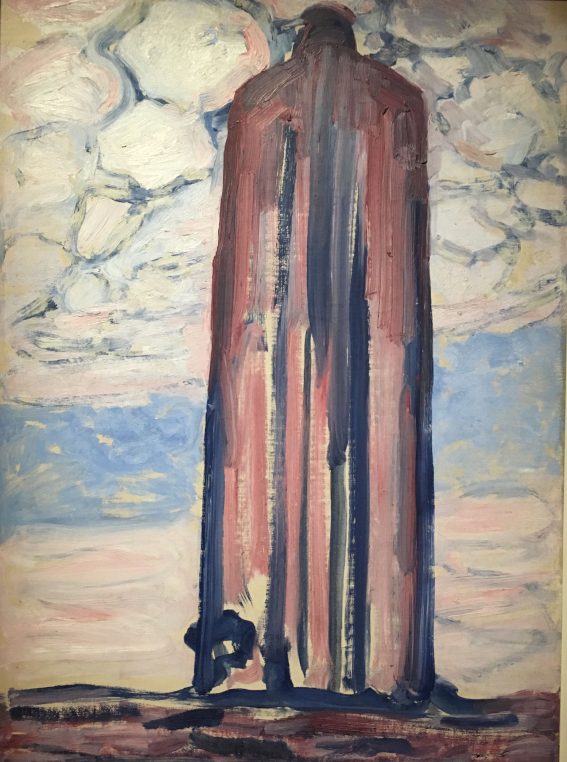Where else but at Musée Marmottan-Monet, could a private collection of sixty seven Piet Mondrian paintings and drawings have found a better home? The new show “Mondrian figurative” is a little jewel of quality for each work was selected by Salomon Slijper, the son of diamond dealer who met the penniless artist in a guest house in Laren in 1915. He bought a hundred and eighty works, mostly figurative paintings, between 1916 and 1920 somethings paying them with expensive clothes. Until now, Mondrian was mostly famous in France for his abstract work.
The fist room of the show confronts “A dead hare” painted in 1891, when he was 19 to “Composition n°IV”, an abstract work, the first one bought by the collector. In the following gallery, we discover traditional farmhouses which already carry (in 1906) a modernity in the lines. “Sunset” is perfectly constructed and linear. If Slijper buys most works for very little money, he will never sell one. There is no speculation in this true collector’s mind.
Color appears in 1907 with a beautiful “Mill in the Sunset”, the first of a series which are more luminous one than the other. This is when he joins the Theosophical society which relies on oriental philosophy and religions. He paints tall buildings like “Clock tower in Zeland” in 1911 and “Light house in Westkapelle” in 1909.
During his stay in Paris in 1913, colors become greyer and he tends to work towards abstraction. He paints the mill where Slijper lives in Blaricum in greys and blacks. His self portrait in 1918 includes an abstract work in the background. He will start his famous red and yellow squares just a afterwards. Slijper buys three of these compositions but keeps loving the “old style”. When he requests a painting like before in 1930, Mondrian tells him off “I ave no time to produce such a work”, and this signs the end of the relationship.
All his life, he will paint flowers and survives through selling floral watercolors when his abstract canvases do not sell.
In 1938, Mondrian settles in London after having lived in Paris and Holland Allis life. H moves to the United States in 1940 and dies in New York in 1944.
Musée Marmottan-Monet, until January 26.
Share this Post





